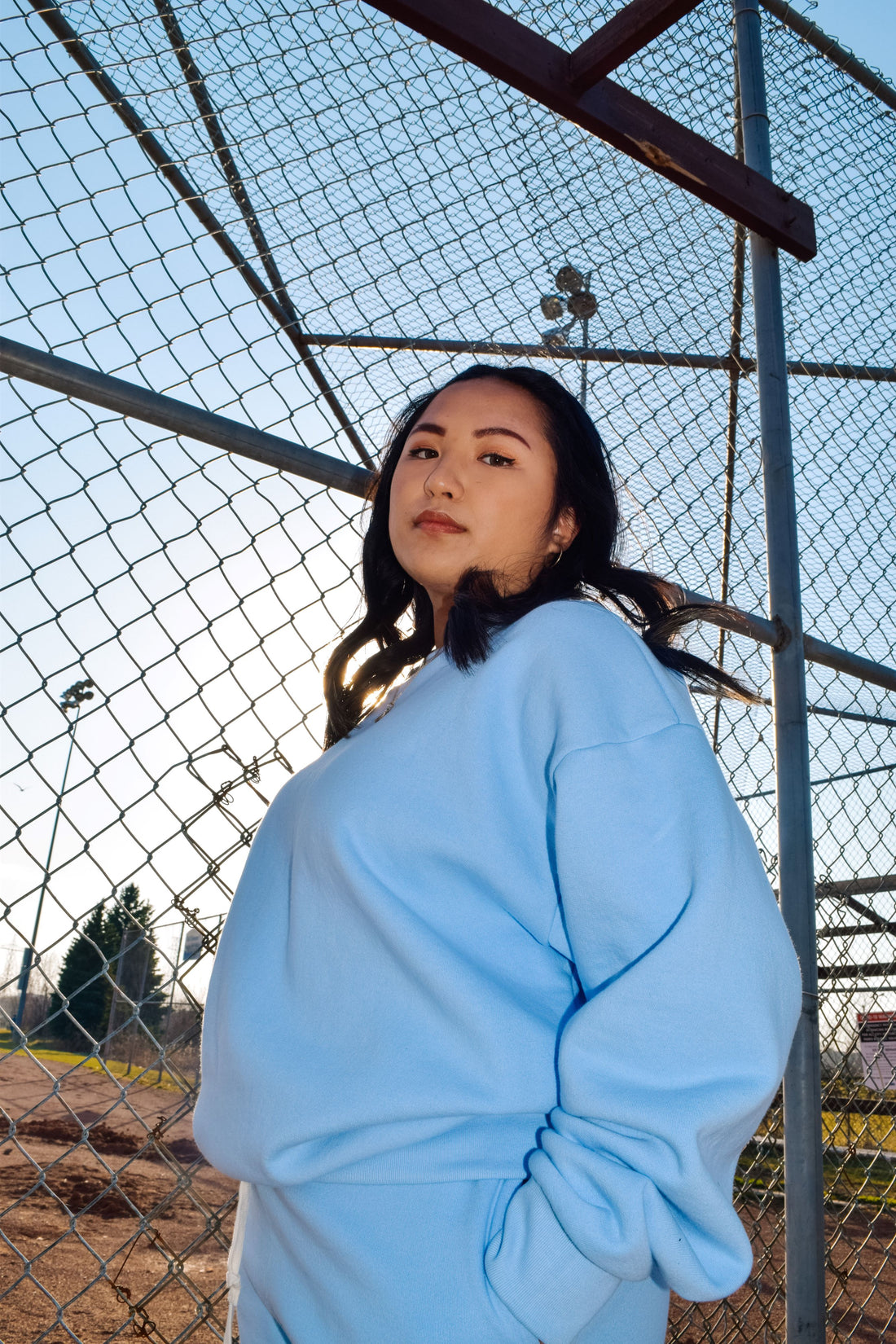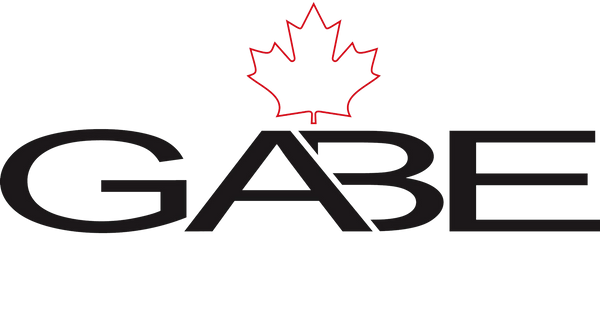
Clothing Blanks: A Look into the world of Custom Apparel Production
Share
Have you ever wondered how your favorite brands create those custom t-shirts, hoodies, and caps you love to wear?
If so, we got you covered. Today, we're diving into the world of clothing blanks. We'll explore their purpose, why they're used, and how they can benefit fashion businesses of all sizes.
What exactly are blanks?
Simply put, clothing blanks (also known as blank clothing or blank apparel) are unbranded garments that are designed to be customized. True to their name, they’re essentially blank canvases that your brand can add designs, logos, and artwork onto. Blanks are easy to print on, embroider, sublimate, cut, and embellish. Making it easy to transform them into unique finished products.
The main purpose of clothing blanks is to simplify the customization process for clothing brands. Since blanks are easy to source for most popular clothing items, like crewnecks, shirts, sweatpants, and hoodies, brands breaking into product categories like loungewear or streetwear can start with blanks to avoid the high overhead costs that come with manufacturing clothes from scratch.
Blanks also offer versatility to clothing startups. Because blanks come pre-made in a broad range of styles, materials, colors, and levels of quality, businesses can choose blanks that match value prop and their target audience’s established preferences.

3 Reasons to Use Blanks for your business
Blanks are cost-effective
One of the main reasons businesses choose to use blanks is because they're a cost-effective way to produce custom clothing.
By buying in bulk and focusing on a few core styles, you can save money on production and stock to a level that makes sense for your business
With a wide range of styles and materials available, there's a blank for every niche and target audience. From cotton t-shirts to moisture-wicking athletic wear, if you have a design idea, there’s probably a blank that can make it happen.
Less Risk For Clothing Startups and Small Businesses
For smaller businesses and clothing startups, using clothing blanks is a smart way to minimize risk and investment while still offering a range of custom products to customers.
By focusing on a few core styles, these businesses can test the market and gauge customer interest. The lower costs and minimum order quantities for blanks mean that if a product offering doesn’t perform as well as hoped, your business is more protected from financial loss.
Blanks Make Managing Inventory Easier
One of the key challenges businesses in the apparel industry face, is managing inventory and fluctuating demand efficiently.
It’s simple. Good inventory management increases profit. Unorganized and bloated inventory leads to wasted resources, increased storage costs, and difficulty in keeping track of stock levels.
Clothing blanks also make inventory management easier. Instead of stocking countless designs and sizes, clothing brands can choose a few core blank styles, which they can customize for different product offerings. This makes it easier to keep track of inventory and re-order when necessary. This also enables quicker replenishment of stock.

Types of Clothing Blanks
The best thing about blanks is they come in all shapes and styles, allowing you to cater to exactly what your customers love.
Here are some of the common types of clothing blanks available:
T-Shirts
T-shirts are the most common type of clothing blank due to their versatility and popularity among all age groups. They come in various fabrics, from 100% cotton, blends, polyester, and even bamboo. You can also source them in trendy, unique proportions to match customer tastes, like with our Boxy Fit T-Shirt Blanks
Sweatshirts and Hoodies
Sweatshirts and Hoodies are popular choices for streetwear and casual clothing brands. These clothing blanks are typically made from heavier, soft materials like cotton or polyester blends for maximum comfort.
Loungewear
As comfort becomes increasingly important to consumers, loungewear has grown in popularity. Blanks for loungewear include items like sweatpants, joggers, and even pajamas. These clothing blanks are typically made from soft, comfortable materials like cotton or bamboo blends.
Activewear
Activewear blanks are designed with performance in mind. These include items like athletic shorts, performance t-shirts, and leggings. They're typically made from lightweight, breathable materials that wick away sweat, like polyester or nylon blends.
Accessories
Clothing brands can also find a variety of accessory blanks, including hats, scarves, bags, and even socks. These items are an excellent way to extend a brand's product line with lower-cost items that still offer plenty of room for customization.
Choosing The Right Blanks For Your Business
When selecting clothing blanks, it's essential to consider your target audience. Think about their preferences in terms of style, fit, and materials, and choose blanks that align with those needs.
For example, if you're targeting fitness enthusiasts, you might want to focus on flexible, moisture-wicking, performance materials. On the other hand, if your audience is more fashion-forward, you could choose trendy styles and fabrics to appeal to their tastes.
Next, consider the various fabric options available. From 100% cotton to blends with polyester, rayon, or spandex, each material has its own unique properties and benefits. Take the time to research and understand the differences between these fabrics to determine which will work best for your products and customers.
Another factor to consider when choosing clothing blanks is the customization method you plan to use. Different fabrics and styles work better with certain printing or embroidery techniques, so be sure to choose blanks that are compatible with your chosen method. For example, if you're using screen printing, you'll want to opt for smooth, even-textured fabrics like cotton or polyester blends.
How to Purchase Blank Clothing
There are many reputable companies out there that offer high-quality blank clothing, but it's important to do your homework and find a reliable supplier that meets your needs.
Here are some tips for finding the perfect partner:
- Compare pricing: Make sure to compare prices across multiple suppliers to ensure you're getting the best deal possible. Remember, buying in bulk often results in discounts, so be sure to check if suppliers offer wholesale accounts.
- Check for minimum order quantities: Some suppliers have high minimum order requirements, which might not be suitable for smaller businesses or startups. Make sure to understand a supplier’s minimum order requirements before committing.
- Read reviews and testimonials: Look for reviews from other businesses to gauge the quality of the blanks and the level of customer service provided by the supplier. This can help you get ahead of and avoid potential pitfalls down the road.
- Request samples: Before placing a large order, ask for samples of the blank clothing. This allows you to assess the quality, fit, and feel of the garments firsthand.
- Check for customization support: Some suppliers offer additional services like printing or embroidery, which can be beneficial if you're looking to streamline your production process.
Remember, the key to choosing the right blanks is finding the balance between quality, affordability, and fit for your audience.
By carefully considering your target audience, fabric options, customization methods, and suppliers, you'll be well on your way to creating custom products your customers will love.
